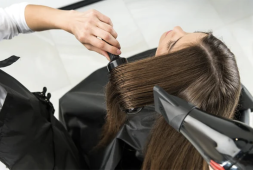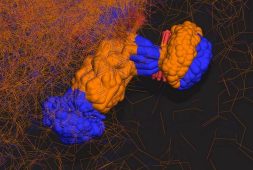
By employing a minimally invasive procedure guided by imaging, researchers have the potential to remedy anosmia, a loss of smell commonly referred to as parosmia, which persists in certain individuals following a COVID-19 infection.
Although a majority of individuals who contracted COVID-19 eventually regained their sense of smell, there exists a subset of patients who continue to experience parosmia for extended periods, spanning months or even years post-infection.
Professor Adam Zoga, the primary author of the study, emphasizes the growing acknowledgment of post-COVID parosmia. He highlights that individuals afflicted by this condition may develop aversions to foods and beverages they once found pleasurable. The utilization of image-guided, minimally invasive interventions holds promise in addressing and potentially resolving these lingering sensory impairments.
“Parosmia has previously been reported as a rare disorder occurring after brain trauma, brain surgery, stroke, viral syndromes, and with some head and neck tumors,” said Zoga. “We were not entirely confident that the procedure would work for parosmia.”
The therapeutic approach entails the direct injection of anesthetic into the stellate ganglion located on one side of the neck, a precision achieved through the guidance of computed tomography (CT). This procedure, characterized by its minimal invasiveness, takes less than 10 minutes to complete, obviating the need for sedation. Its efficacy extends beyond its primary application, as it has been successfully employed in addressing various conditions, such as cluster headaches, phantom limb pain, Raynaud’s and Meniere’s syndromes, angina, and cardiac arrhythmia.
In the context of the study, 54 patients were referred by an ear, nose, and throat specialist, following a minimum of six months of post-COVID parosmia that remained unresponsive to both pharmaceutical and topical interventions. In an innovative approach, the researchers augmented the anesthetic with a small dose of corticosteroid, hypothesizing that the inflammatory response induced by the COVID virus might be influencing nerve function.
Upon subsequent analysis, follow-up data for 37 patients revealed that 22 experienced an improvement in symptoms one week after the injection. Notably, 18 of these individuals reported sustained and significant progress in their symptoms by the one-month mark post-procedure. Encouragingly, the study recorded no instances of complications or adverse events associated with this intervention. This research underscores the potential effectiveness of this minimally invasive technique in ameliorating post-COVID parosmia, offering a promising avenue for individuals who have exhausted conventional treatment options.
“The initial patient had a tremendously positive outcome, almost immediately, with continued improvement to the point of symptom resolution at four weeks,” Professor Zoga shared.
“We have been surprised at some outcomes, including near 100% resolution of phantosmia, a condition that causes people to detect smells that aren’t there, in some patients, throughout the trial,” he said. He also added that this injection has shown to be effective compared to the other failed treatments.



